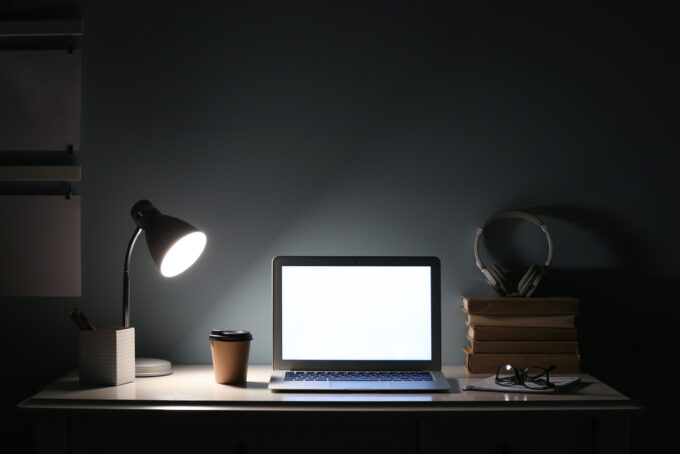Seven light tips
More comfort, more concentration. Good ergonomics and optimum lighting make work easier and also motivate people at work. Jürgen Waldorf, managing director of the industry initiative licht.de, has seven tips.

Quarantine and strict contact requirements: The coronavirus is keeping the world on tenterhooks and ensuring that more and more office workers are suddenly working from home offices, either voluntarily or by order. While some have been working from home on a daily basis or entirely for some time, others are not quite ready for the home office. Here are the seven tips for more comfort in the home office from Dr. Jürgen Waldorf, Managing Director of the industry initiative licht.de.
1. set up a permanent workstation for yourself
Great if you can do your office tasks in an already set up home office. This way you can easily separate work and relaxation at home. But what if there is no extra office? A good alternative is a separate workspace. It can be easily screened off, for example, by a portable movable wall, a screen or a shelf.
2. make sure the chair and table fit you
Anyone who now works at home for more than an hour or two needs the appropriate equipment. Even a small upgrade to the work corner can quickly pay for itself in everyday life. Ergonomically sound equipment includes a height-adjustable desk chair and a matching desk. This prevents back pain and poor posture. Good ergonomics also include the right lighting.
3. place the computer and screen to the side of the window
Although today's computers usually have a good anti-reflective coating, make sure that there are no large brightness contrasts or reflections at the workplace. They disturb the visual comfort and should be avoided. It is therefore best to position the desk and monitor to the side of the window. In this way, sufficient daylight falls on the workstation without dazzling it. A positive side effect is that the eye can also "wander" from time to time, which is good for the eyes and for the sense of well-being.
4. lux and lumen: important ingredients for your lighting concept
Also indispensable: a well-coordinated lighting concept that takes into account natural daylight, direct and indirect lighting. Sufficient basic lighting ensures that the contrasts between the workplace and its surroundings are not too high and that the eyes do not have to constantly adjust to different brightness levels. Desk luminaires provide supplementary direct light at the workplace. In both cases, energy-saving LED solutions are a good choice.
Practical assistance in lighting design is provided by the European standard DIN EN 12464-1 on the lighting of indoor workplaces. According to this standard, every workplace should be illuminated with at least 500 lux; in the immediate vicinity, 300 lux is correct. Translated, this means: A desk lamp should provide about 1000 lumens. For the illumination of the adjacent environment, an LED luminaire with about 600 lumens is correct.
In the study, pendant luminaires are used or power track. They make do with a single ceiling outlet, but still bring the light to where it is needed. Additional accents are set by individual luminaires that direct their light onto bookshelves or pictures. As a quick and simple lighting solution for small work corners, for example, a ceiling washer is suitable as a floor lamp. It provides pleasant indirect light and sufficient brightness in the surroundings so that visual tasks can be easily perceived.
By the way: Older employees need much more light than younger ones. So it may be a little more lux above the standard recommendation.
5. flexible lights
Desk lamps provide direct light on the work surface. They are really practical when they are equipped with a movable luminaire arm. Then the luminaire head can always be positioned as required, for example when reading important documents. Another tip: The light should come from the left for right-handers and from the right for left-handers so that no disturbing shadows are created when writing. Position the lamp so that reflections on screens and shiny surfaces are avoided.
6. chipper in the morning, but rather relaxed in the evening
What is the right light color for the home office? It depends on the time of day: Following nature's example, neutral white light with at least 3500 Kelvin is right for mornings and early afternoons. The high blue components in it make people awake and promote concentration, explains licht.de.
On the other hand, if you still work in the evening, it's better to switch on a subdued, warm light (maximum 2700 Kelvin) so as not to unnecessarily throw off your sleep-wake rhythm. This also includes setting the screen to night mode in the evening.
7. "Smart" for more convenience
Lights on and off were yesterday. Today, lighting can be effortlessly controlled with appropriately equipped light sources: Brightness and light color can be adjusted as needed. Some systems are easy to operate via app and smartphone - and offer an ideal solution for the home office.
Source: licht.de









